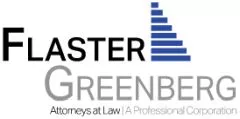On May 12, 2022, the EEOC issued Technical Guidance on the topic of Algorithm Decision Making tools in the employment arena. This Guidance specifically focuses on how these tools can expose employers to liability under the Americans with Disabilities Act. This is the first in a seven part series on the Guidance. Each blog will take an in depth look at the various topics covered by the EEOC. We will cover the entire Guidance in a doable way.
The purpose of these blogs is to educate both HR professionals and AI/Machine Learning professionals. It is crucial for AI vendors in this space to have a solid grasp of the various employment laws, so they understand the needs of their customers. It is also crucial for employers to have some understanding of the concepts surrounding AI/Machine Learning.
This first blog tackles definitions.
The EEOC begins the Guidance by providing four basic definitions:
- Software. Information technology programs or procedures that provide instructions to a computer on how to perform a given task or function. (NOTE: This definition comes from the US Access Board).
- Application ("App"). This is the type of software designed to perform/help the user perform specific tasks.
- Algorithm. A set of instructions that can be followed by a computer to accomplish some end.
- Artificial Intelligence ("AI").
Machine based system that can, for a given set of human-defined
objectives, make predictions, recommendations or decisions
influencing real or virtual environments. Examples of AI include:
(1) machine learning, (2) computer vision, (3) natural language
processing and understanding, (4) intelligent decision support
systems, and (5) autonomous systems.
- Let's unpack AI:
- AI is used to develop Algorithms.
- The developer of AI relies on a computer's own data to determine which criteria to use when making employment decisions.
- Let's unpack AI:
Examples of Software and Apps
The EEOC includes examples of Software and Apps used by employers such as: (1) automatic resume screening software, (2) hiring software, (3) chatbot software, (4) video interview software, (5) analytic software, (6) employee monitoring software, and (7) worker management software.
Prudent HR Professionals should be aware that the HR Software and Apps use Algorithms to process data. These Apps use algorithms to (1) evaluate, (2) rate, and (3) make decisions about applicants and employees. As we have previously posted, HR professionals must be aware of the laws that relate to machine learning and bias. The implicit bias that can result from the use of AI may expose employers to liability under the ADA. It is important that employers understand that some of their HR tools may be covered by these new laws. Again, the purpose of this first blog is to provide a brief introduction for HR Professionals to the key buzzwords in this arena.
The content of this article is intended to provide a general guide to the subject matter. Specialist advice should be sought about your specific circumstances.


